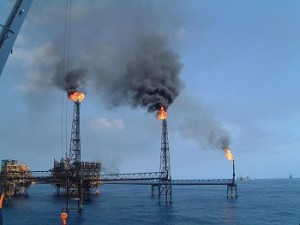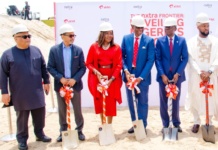 Apparently as a result of the inability of the West African Gas Pipeline to supply sufficient gas to the country, Ghana is looking to develop its own gas resources to help drive thermal power generation in the country.
Apparently as a result of the inability of the West African Gas Pipeline to supply sufficient gas to the country, Ghana is looking to develop its own gas resources to help drive thermal power generation in the country.
It would be recalled that the $1 billion transnational gas pipeline, the first sub-regional natural gas project in sub-Saharan Africa, was initiated by the governments of Nigeria, Benin, Ghana and Togo to supply gas from the Escravos region of the Niger Delta to feed the gas-fired generating plants of the three participating countries.
But Kirk Koffi, a deputy chief executive of the Volta River Authority (VRA), Ghana, said the country could not rely on Nigeria for stable and adequate supply of gas for thermal power generation, according to GhanaWeb.
“The West African Gas Pipeline as designed today can only give us 170 million cubic feet. We need extra investment to be able to move from 170 to 240 in order to realise the full potential of that pipeline,” he said.
“The gas is there. The problem with getting enough supply from Nigeria is the investment to bring the gas from the ground; we are influencing that, but it’s not happening.”
Current gas supply of 70 million cubic feet per day from Nigeria via the West African Gas Pipeline for thermal power generation is 50 million cubic feet short of the contractual volume of 120 million cubic feet per day.
This has meant that only the 200 megawatts (MW) gas-reliant Asogli thermal plant and just one other plant in VRA’s portfolio run on gas.
“The future for us is to depend on our own gas. We cannot 100 percent depend on them [Nigeria]. The future is to get this gas from Ghana and to have Liquefied Natural Gas (LNG) and invest in LNG infrastructure; that’s what we are looking at. The future is to get that massive infrastructure in this country to help drive thermal generation to drive the economy. The levels [of gas from the fields in the country] are high,” Koffi said.
Nigeria, which has abundant gas reserves, is estimated to export 3 billion cubic feet of gas per day and also flares about 1 billion cubic feet every day.
Electricity demand in Ghana currently stands at about 1,800MW per day. The VRA, with a total installed capacity of 2,100MW, generates about 1,600MW of electricity – both hydro and thermal – daily. Bui, CENIT, and Sunon Asogli power plants together produce about 400MW of electricity to supplement what the VRA produces.
The Ghana National Gas Company (GNGC) is currently constructing a pipeline to transport gas from the Jubilee Field to the gas processing plant at Atuabo in the Western Region. The company is also constructing a transmission line from the processing plant to Takoradi to transport processed gas to the thermal power plants at Aboadze.
So far, both the onshore and offshore pipelines from the Jubilee Oilfield to Atuabo through to Aboadze Thermal Plant had been laid. Two LPG storage tanks are also nearing completion. The entire project, according to the GNGC, is about 72 percent completed.
The GNGC said that the project would hopefully be completed by the first quarter of next year.
The completion of the gas project is expected to significantly reduce the amount the VRA spends on the purchase of crude oil for thermal power generation.









